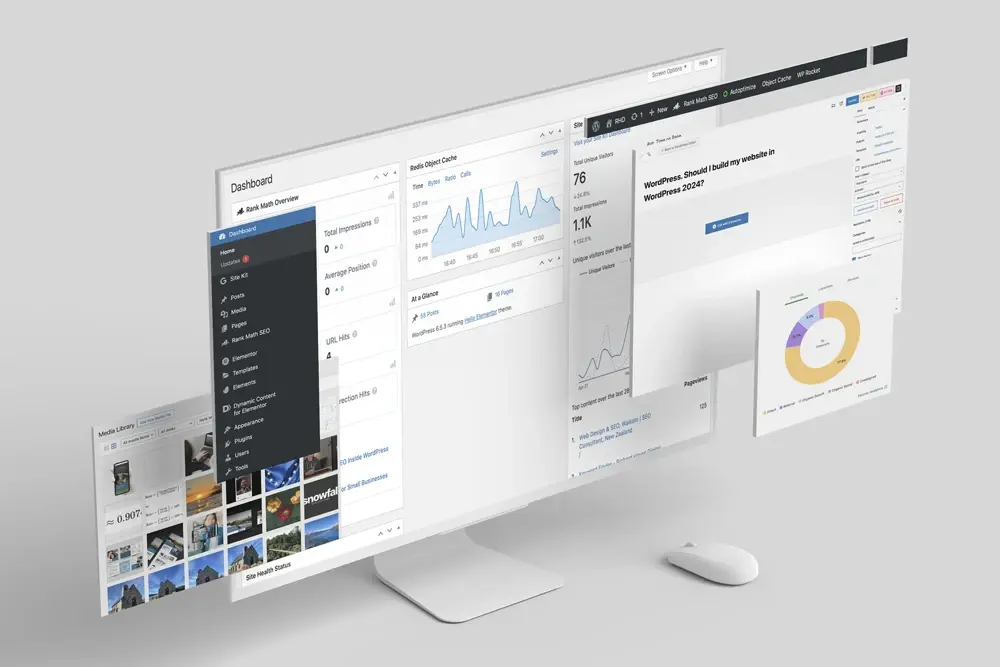The blog is dead! or is it evolving?
It’s definitely in decline. It’s a simple fact. Fewer people are reading, and the rise of AI, the impact of Social Media, and ever-increasing video consumption have overrun the blog! The blog used to reign supreme. It was the go-to format for sharing ideas, advice, opinions, and expertise.
But today, the blog seems to be on life support, if not entirely dead. The reasons behind this are multi-layered, but one thing is sure: the blog isn’t going to survive in its traditional form. Here’s why.
Listen to Podcast
Created by Google NotebookLM
Attention spans are shorter than ever
The internet has trained us to expect instant gratification. We scroll, swipe, and skim, absorbing snippets of information in mere seconds. Gone are the days when readers would sit down and spend 10 or 15 minutes carefully digesting a well-thought-out blog post.
In a world where even social media posts struggle to hold attention, the long-form blog post is becoming increasingly irrelevant. People aren’t willing to dedicate the time needed to read anymore, and as a result, blogging has taken a backseat to more immediate, attention-grabbing forms of content.
Audiences now want quick answers, insights, or multimedia that get to the point without demanding too much of their attention
We live in a world of instant answers
One of the primary reasons blogs thrived was their ability to provide in-depth information. Need a recipe? There’s a blog for that. Want to learn how to fix something around the house? A blog had step-by-step instructions. But today, people aren’t searching for deep dives. They want instant, bite-sized answers.
Information is now being delivered in more digestible forms through apps, AI tools, and platforms that offer immediate responses to user queries. People expect to get what they need within seconds, and blogs, which often require scrolling through introductions, anecdotes, and lengthy explanations, no longer fit this fast-paced demand.
The result? Blogs are increasingly seen as too slow, cumbersome, and wordy for today’s hyper-speed world.
Rise of bite-sized content
In this era of constant stimulation, bite-sized content is king. The explosion of social media platforms like TikTok, Instagram, and Twitter has shown us that users want information in fast, easy-to-consume chunks. Social media platforms’ success lies in their ability to deliver content that people can engage with immediately and with minimal effort.
Blogs, on the other hand, demand more. They require scrolling, reading, and thinking. Actions that don’t align with the on-demand, bite-sized culture we’re accustomed to.
Instead of investing in 1,500-word blog posts, content creators opt for quick, shareable snippets that cater to the fleeting attention of today’s audiences.
Source: Backlinko
The shift to multimedia content
As the internet has evolved, so have the types of content that dominate it. Why read a 2,000-word article on climate change when you can watch a compelling, visually engaging video that explains it in five minutes? Why skim a blog post about self-care when you can listen to a podcast episode while driving to work?
Multimedia content allows for passive consumption. Blogs, however, require focused attention, which fewer people are willing to give. The rise of video, audio, and interactive content pushes written formats aside, and blogs struggle to stay relevant.

Source: The Shelf: YouTube Statistics
More people are choosing to listen rather than read
Podcasts, audiobooks, and voice-based content are growing because they allow people to absorb information without sacrificing other activities. You can listen while working out, cooking, or commuting. Reading a blog, on the other hand, demands that you stop what you’re doing and focus solely on the text in front of you.
The rise of voice search and intelligent assistants further proves this shift. More users rely on voice commands to get answers, and when they receive responses, they want them to be spoken back quickly, concisely, and actionably. In this world, the blog post feels like an outdated, time-consuming relic.
Once upon a time, blogs were the bread and butter of online visibility
With a good keyword and SEO strategy, a well-crafted blog post could reach the top of search engine rankings. But the game has changed. Algorithms prioritise other formats and real-time content over text-heavy blog posts.
Search engines and social platforms are increasingly promoting visual and interactive content. This shift has relegated blogs to the sidelines, making it harder for them to achieve the visibility they once enjoyed.
Hundreds, if not thousands, of blog posts are published every second
Especially with AI-generated content, adding to the saturated online landscape. With so much content competing for attention, standing out has become incredibly difficult. Blogs, which once served as a unique voice in the digital world, are now just one of millions.
Content saturation has diluted the power of the written word, and unless a blog has an extremely niche audience or a strong, established brand, it’s easy to get lost in the noise.
This saturation pushes creators toward newer, more innovative formats while blogs slowly fade into the background.
Engagement is the currency of the Internet
In today’s world, comments, shares, and likes have more influence than ever.
While blogs were once an engagement hub—with readers commenting, sharing posts, and starting conversations—today’s audience is likelier to engage with content through reactions, stories, and short-form interactions on social media.
The dynamics of how we interact with content have shifted, favouring platforms that allow for quick, reactive engagement.
Blogs, with their lengthy text and sometimes cumbersome commenting systems, don’t provide the instant feedback loops like other formats. People want to engage in a matter of seconds, and the traditional blog format doesn’t offer that immediacy.
While the traditional blog may be dying
There’s a growing niche for highly specialised blogs. These blogs cater to a specific, dedicated audience with unique interests or perspectives. While they may never reach the masses, niche blogs thrive in communities such as academia, specialised hobbies, or industry-specific insights.
However, the days of starting a general blog and expecting widespread engagement are over.
To survive, blogs must carve out a highly specialised niche that offers value in ways other content formats can’t. Even then, their reach is limited compared to the universal appeal of multimedia content.
In a world where attention spans are shorter, content is more visual
People demand faster, more engaging content in formats that allow them to multitask and absorb information. With algorithms deprioritising text and shifting their focus to visual and audio content, the writing is on the wall.
While niche blogs may hang on, the golden era of blogging is over. The message is clear for content creators: They must adapt to the new media landscape or risk being left behind.
The blog, as we knew it, is dead, and a new world of content is rising in its place.
Did you make it to the end?
If you are reading this, you have reached the end of this post. Congratulations; you are one of the very few. Did you read the whole article or scan it?
Appreciate your time.





